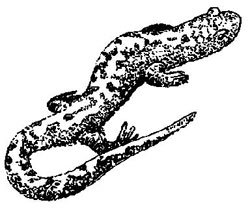Footnotes:
- See Will Eaton, “This Month’s Speaker,” Nature Trail ( Eugene Natural History Society) 17:2 (February 1983), p.2-4, And David M. Green and Stanley Sessions (eds.) Amphibian Cytogenetics and Evolution (New York: Academic Press, 1991), pp.1-6. Both are in the biographical file for Kezer.
- American Association for the Advancement of Science. George Ruhle was the Chief Park Naturalist from 1940 to 1952.
- See fieldnotes of interview with Ruth Hopson Keen, taken on February 9,1992.
- Farmer was the lead seasonal naturalist. Ruhle had no assistant with a permanent appointment.
- The Russian satellite which set off the so-called “Space Race” in 1957.
- Succeeding Harry Parker, who left in 1956. Fairbanks served in that capacity until 1958 and was replaced by Bruce Black.
- Kezer notes that, in this instance, a relatively large collection has scientific value. In contrast to the usual practice taking only small of an animal population, this collection indicates the extent of variation within an endemic subspecies at that time.
- Professor of Zoology at Oregon State College.
- Kezer recalls that Storm experienced difficulties in answering correspondence at that time, something that unfortunately prevented their collaboration. The two later became good friends after Kezer arrived at the University of Oregon.
- Farner, The Birds of Crater Lake National Park (Lawrence, KS: University of Kansas Press, 1952)
- See the biographical file on Wynd.
- The Department of Zoology at U of O.
- Until Donald Libbey filled the job on a permanent basis in 1931, all park naturalists at Crater Lake were temporary positions. Wynd’s position was equivalent to that of a lead seasonal naturalist.
- Apparently the concessionaire, Richard Price, objected to the jars containing the newts being shown by one of the two ranger naturalists doing the evening program.
- Administration Building.
- The bog is near Willamette Pass.
- The Obsidians are an outdoor club based in Eugene.
- It appeared in 1951.


